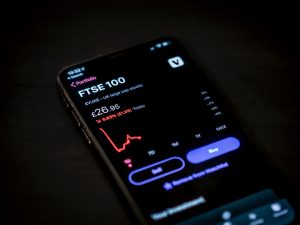Real Time Forex Analysis: Tools and Techniques for Traders
Forex trading is a dynamic and fast-paced market that requires traders to stay on top of the latest market trends and developments. To make informed trading decisions, traders need real-time forex analysis using various tools and techniques. In this article, we will explore some of the most effective tools and techniques that traders can use to analyze the forex market in real time.
1. Economic Calendar:
One of the most important tools for real-time forex analysis is an economic calendar. This tool provides traders with a schedule of upcoming economic events and their impact on various currency pairs. By keeping track of economic indicators such as interest rate decisions, GDP growth, and employment data, traders can anticipate market movements and adjust their trading strategies accordingly.
2. Technical Analysis:
Technical analysis is a widely used method for analyzing the forex market in real time. Traders use various technical indicators, such as moving averages, oscillators, and trend lines, to identify patterns and trends in price movements. By analyzing historical price data, traders can make predictions about future price movements and take advantage of trading opportunities.
3. Candlestick Charts:
Candlestick charts are an essential tool for real-time forex analysis. These charts provide a visual representation of price movements over a specific time period. Traders can analyze candlestick patterns, such as doji, hammer, and engulfing patterns, to identify market reversals and trend continuations. Candlestick charts also provide valuable information about the opening, closing, high, and low prices of a currency pair, allowing traders to make informed trading decisions.
4. Fibonacci Retracement:
Fibonacci retracement is a popular technique used by traders to identify potential support and resistance levels in the forex market. This technique is based on the Fibonacci sequence, a mathematical sequence in which each number is the sum of the two preceding numbers. Traders use Fibonacci retracement levels, such as 38.2%, 50%, and 61.8%, to predict possible price reversals and target areas for entering or exiting trades.
5. Sentiment Analysis:
Sentiment analysis is a technique that involves monitoring the market sentiment or the overall attitude of traders towards a particular currency pair. Traders can use sentiment analysis tools to gauge the level of bullishness or bearishness in the market. By analyzing sentiment indicators, such as the Commitment of Traders (COT) report or social media sentiment, traders can make informed decisions about the direction of the market.
6. News Feeds and Alerts:
To stay updated with the latest market news and developments, traders need access to real-time news feeds and alerts. These tools provide traders with breaking news, economic announcements, and market analysis from various sources. By staying informed about the latest events, traders can react quickly to market changes and adjust their trading strategies accordingly.
7. Trading Platforms:
Trading platforms are essential tools for real-time forex analysis. These platforms provide traders with access to real-time price quotes, charts, and technical indicators. Traders can use trading platforms to execute trades, set stop-loss and take-profit levels, and monitor their trading positions. It is crucial for traders to choose a reliable and user-friendly trading platform that suits their trading needs.
In conclusion, real-time forex analysis is crucial for traders to make informed trading decisions in the fast-paced forex market. By using tools and techniques such as economic calendars, technical analysis, candlestick charts, Fibonacci retracement, sentiment analysis, news feeds, alerts, and trading platforms, traders can stay ahead of the market trends and maximize their trading profits. It is important for traders to continuously update their knowledge and skills in real-time forex analysis and adapt their strategies to the ever-changing market conditions.






